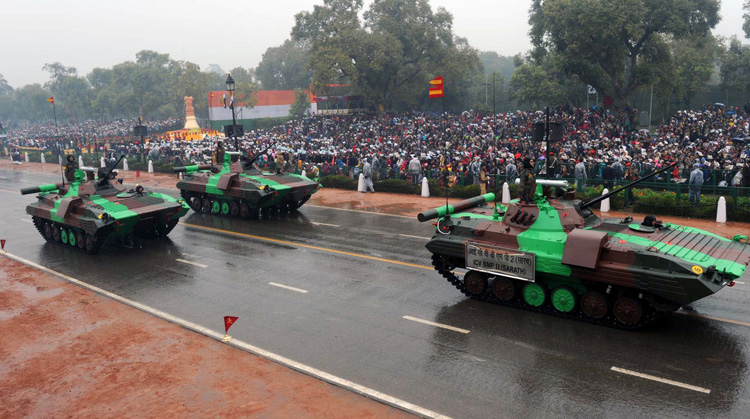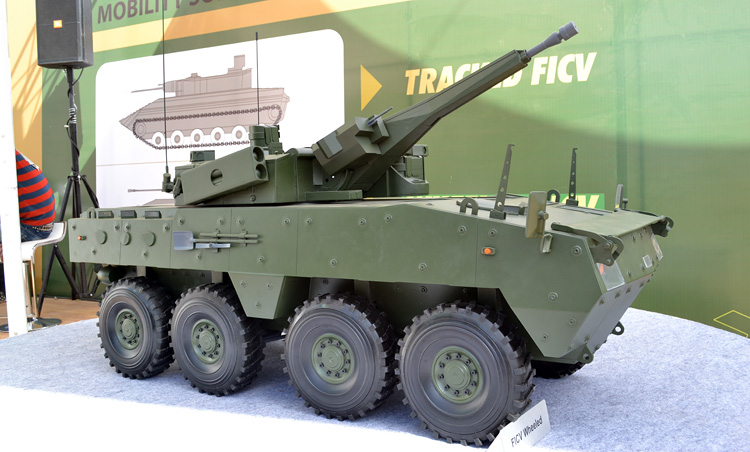INDIAN ARMED FORCES CHIEFS ON OUR RELENTLESS AND FOCUSED PUBLISHING EFFORTS

The insightful articles, inspiring narrations and analytical perspectives presented by the Editorial Team, establish an alluring connect with the reader. My compliments and best wishes to SP Guide Publications.

"Over the past 60 years, the growth of SP Guide Publications has mirrored the rising stature of Indian Navy. Its well-researched and informative magazines on Defence and Aerospace sector have served to shape an educated opinion of our military personnel, policy makers and the public alike. I wish SP's Publication team continued success, fair winds and following seas in all future endeavour!"

Since, its inception in 1964, SP Guide Publications has consistently demonstrated commitment to high-quality journalism in the aerospace and defence sectors, earning a well-deserved reputation as Asia's largest media house in this domain. I wish SP Guide Publications continued success in its pursuit of excellence.
- MoD initiates comprehensive review of Defence Acquisition Procedure 2020, pushes for defence reforms
- G7: The Swansong
- Kalinga Connect: South Asia to Polynesia
- Must Credit DRDO for Operation Sindoor, now what is next for defence R&D?
- The layered Air Defence systems that worked superbly, the key element of Operation Sindoor
- Operation Sindoor | Day 2 DGMOs Briefing
- Operation Sindoor: Resolute yet Restrained
ICV procurement approved
 |
By Lt. General P.C. Katoch (Retd) Former Director General of Information Systems, Indian Army |

On January 20, 2018, Defence Minister Nirmala Sitharaman cleared the proposal for procurement of 156 infantry combat vehicles (ICVs) to meet the requirement of the mechanized infantry and troops for rapid deployment. According to MoD sources, essential quantity of ICVs (BMPs-2/2k) will be procured for mechanised infantry and other services at an estimated cost of over 1,125 cr. Media reports, quoting Army sources, said the new ICVs to be procured would also be used by the arms and services which support the infantry and other combat arms in the war, like the Corps of Signals, Artillery, Combat Engineers and others, saying, "These arms are supposed to move in into the enemy territory along with the tank regiments and infantry troops at a rapid pace in case of a war in the desert terrain." Artillery officers use the combat vehicles as observation posts for directing the fire of their guns and howitzer on enemy locations while the signals officers use them for establishing lines of communications. But ICVs are mainly used by the Mechanised Infantry Regiment (MIR). The entire ICV fleet of the Indian Army is acquired from the Russians, including the BMP-1 and the BMP-2, which have been acquired in different batches at regular intervals by the force. The Army is also looking at the prospect of acquiring a new futuristic ICV to tackle the challenges and situations of the modern-day warfare. In the project to procure 2,600 futuristic infantry combat vehicles (FICV) for the Indian Army, which has been held up for over a decade. In April 2012, media reports were abuzz about government having opened the doors for private players to bid for a project to build the FICV.

Four companies were in the fray - Tata Motors, Mahindra Defence Systems, L&T and the government owned Ordnance Factory Board (OFB). All the four bidders had presented their designs and the evaluation was set to move to the final phase “within a month”. The Army needed about 2,600 such vehicles over 20 years. The 50,000-crore order was likely to be divided between the winner and runner-up, providing a huge leg up to the defence manufacturing industry. This indeed was to be a game changer; help develop an eco-system of small and medium sized companies as suppliers to the winners. Mahindra Defence was then partnering with British Aerospace, OFB was reportedly looking for partnering Russian arms export agency Rosoboronexport, while there was no clarity on who the partners were for the other two bidders. It was also then reported that Army evaluation teams had visited the factories of all four bidders to test their capabilities. Two companies were to be shortlisted and asked to build one prototype each - the manufacturing of these were to be funded 80 per cent by the government. Subsequently, these prototypes were to be tested and evaluated in various conditions after which a winner was to be chosen. However, the contract was to be split, with the winner getting 65-70 per cent of it and the runner-up taking the rest.
The project no doubt is a big challenge involving system integration; the platform, the software and electronics have to be integrated for the vehicle to function well and indigenous companies have little experience in this. While all the four bidders would obviously have foreign partners, the fear expressed was that the high-end work will be done abroad, akin to Russian aircraft being assembled in India over decades but design and development of every new generation plane was done in Russia. If this were to happen in case of the FICV, it will help little in defence-technological advancement within India. But five years after the abovementioned reports, which included all bidders having presented their designs, evaluation set to move to the final phase within a month, and Army evaluation teams having visited factories of all four bidders, media reports emerged in 2017 that MoD was reportedly “fast tracking” by deciding on which two bidders will develop the prototypes; quoting MoD source “will soon be selected”. The FICV project actually must be fast-tracked, and India needs to get on with ‘Make in India’ eliminating the red tape. Now that Defence Minister Nirmala Sitharaman has increased the number of defence acquisition council (DCAC) meetings to step up military modernization, hopefully the much delayed FICV project too will get hastened.





